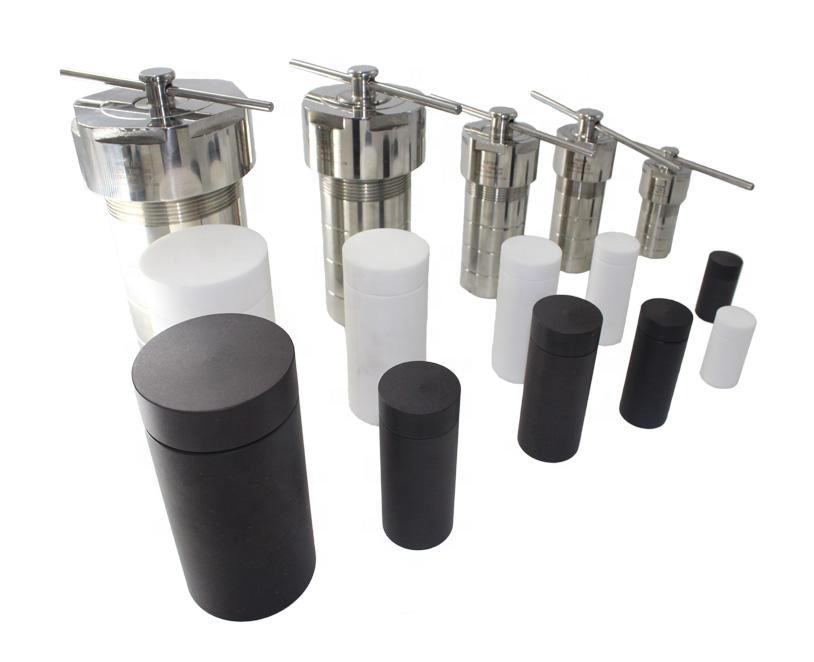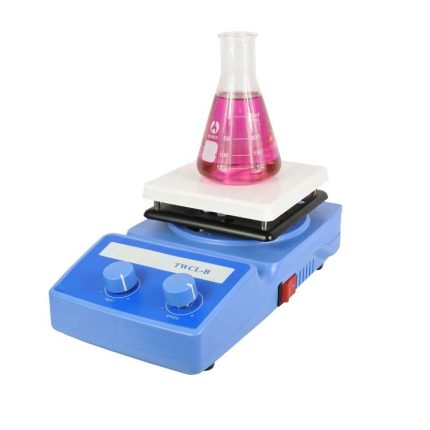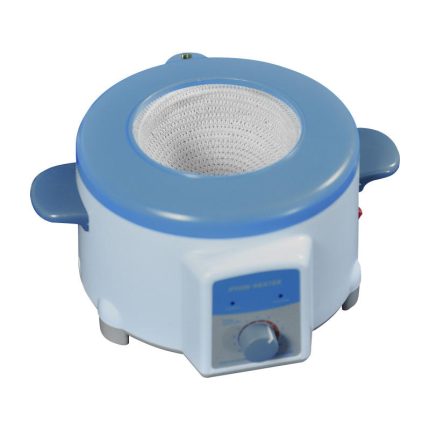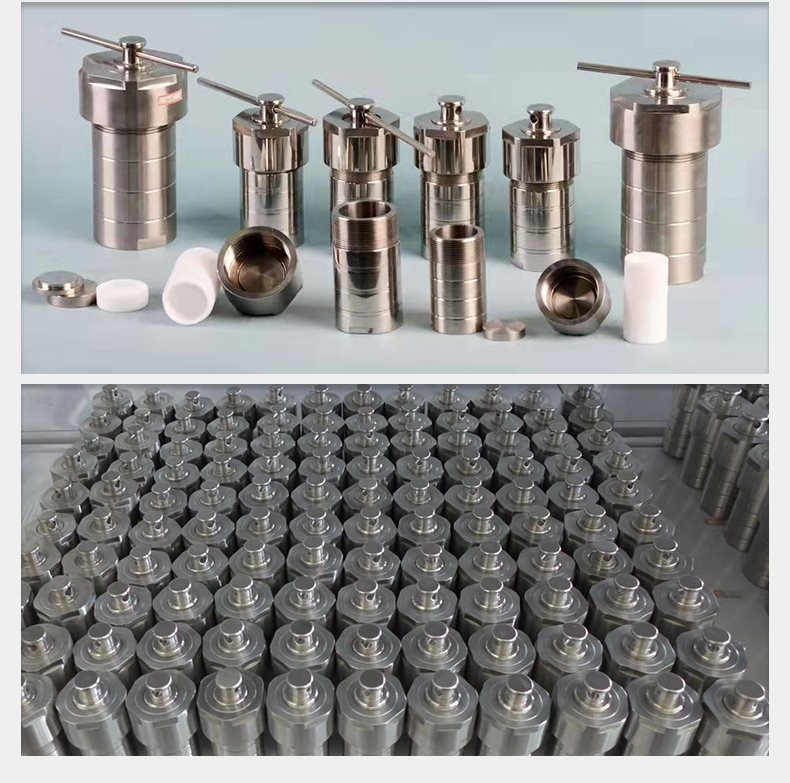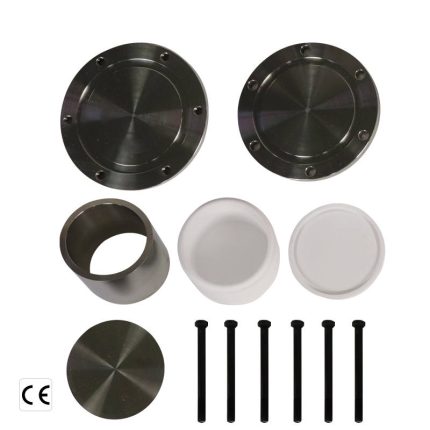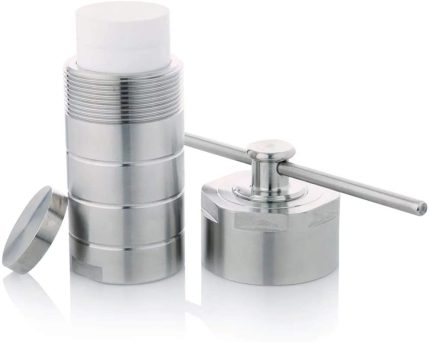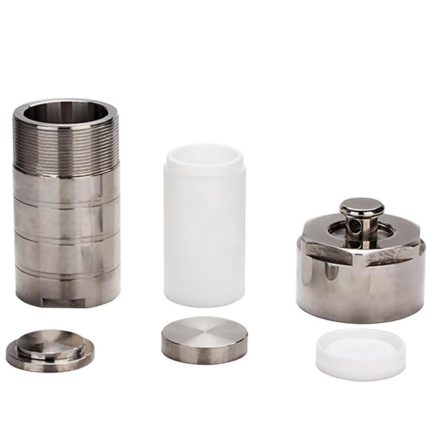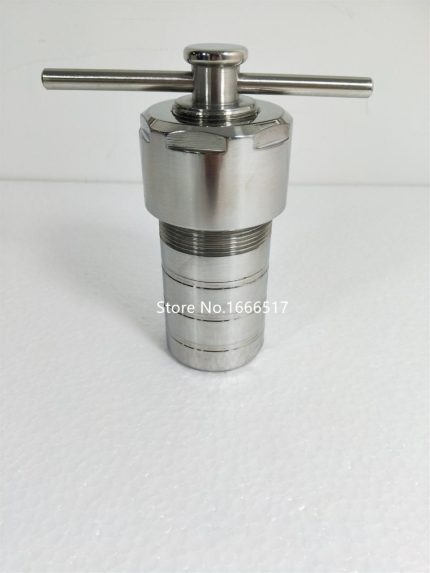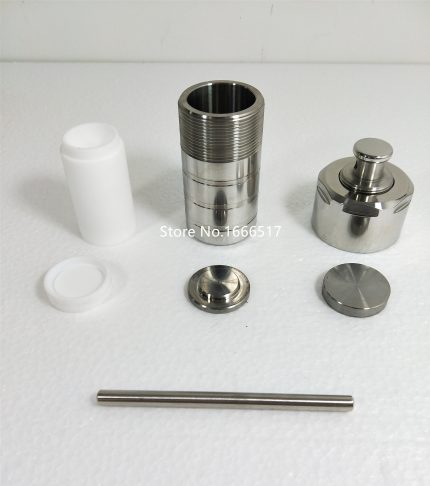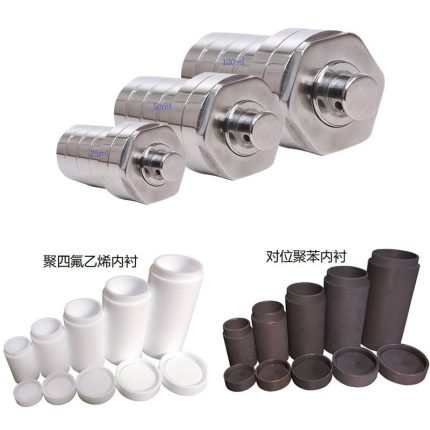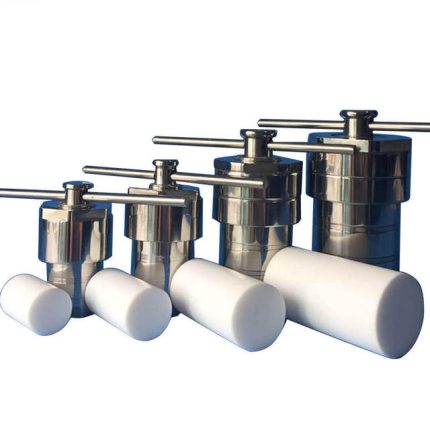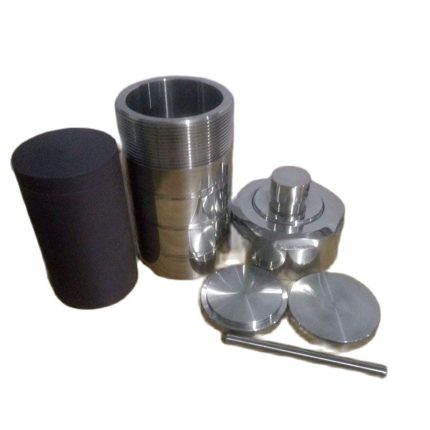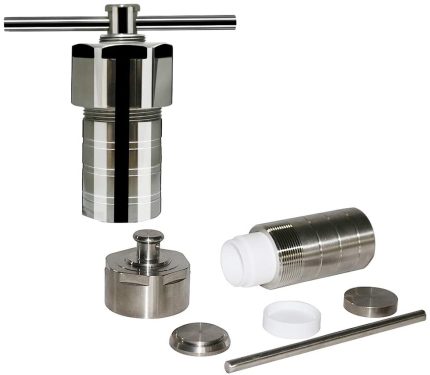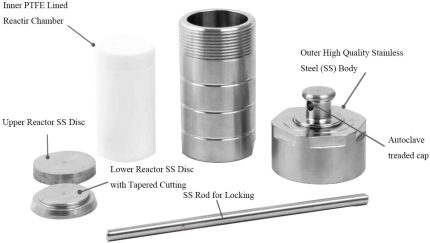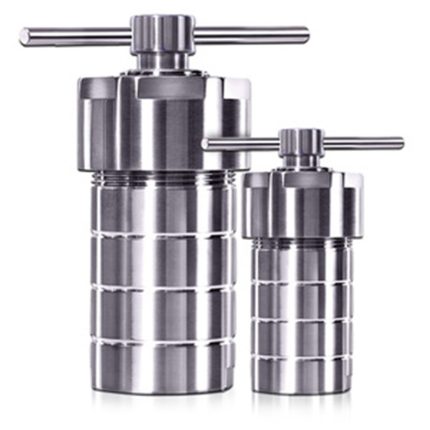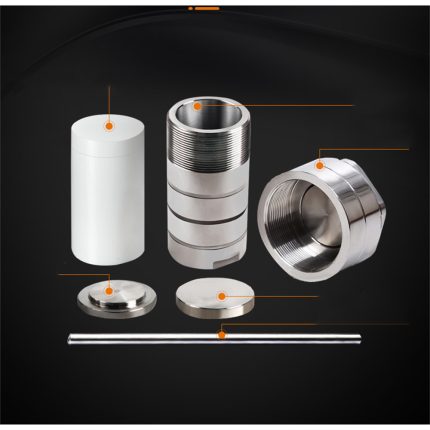25ml Hydrothermal synthesis autoclave with PTFE lining reactor:
hydrothermal synthesis reactor is composed of body + lining, PPL lining safety temperature is 280 ℃, PTFE lining safety temperature 220 ℃, the highest pressure within 3-6 MPa. With beautiful appearance, reasonable structure, easy operation, good corrosion resistance, is the ideal product of the university laboratory, environmental monitoring, health and epidemic prevention, quality supervision and scientific research fields do sample digestion.
PRODUCT SPECIFICATIONS of 25ml Hydrothermal synthesis autoclave with PTFE lining reactor
| Name | Hydrothermal synthesis Reactor (PTFE liner) |
Hydrothermal synthesis Reactor (PPL liner) |
| Mode | HR-5/10/25/50/100/150/200/300/500 | HR-5/10/25/50/100/150/200/300/500 |
| Volume | 5ml/10ml/25ml/50ml/100ml/150ml/200ml/3 00ml/500ml | 5ml/10ml/25ml/50ml/100ml/150ml/200ml/3 00ml/500ml |
| Safe Temperature | 220℃ | 280℃ |
| Material | High quality 304 stainless steel +PTFE lining | High quality 304 stainless steel +PPL lining |
| Corosion Resistance | Resistant strong acid,strong alkali, aqua regia and various organic solvents | Do not apply alcohol, benzene and other organic solvents |
| Using Pressure | 3 Mpa | 3 Mpa |
| Antifouling Performance | The blank value of metallic elements is low, the content oflead is less than 10-11g/ml, and the content of uranium is less than 10-12g/ml | The blank value of metallic elements is low, the content oflead is less than 10-11g/ml. and the content of uranium is less than 10-12g/m1 |
| Leakproof Performance | When falling from a height of 1.2 meters above the ground,the bottle does not break, the cap does not fall off and there is no damage or leakage | When falling from a height of 1.2 meters above the ground,the bottle does not break, the cap does not fall off and there is no damage or leakage |
The reactor body is made of high quality non-magnetic 0Cr18Ni9Ti stainless steel and is machined by hand. It has the advantages of good sealing, high safety, less solvent consumption and simple use.Teflon PTFE or PPL liner is available in two materials, double protection, acid and alkali resistant.
FEATURES AT A GLANCE of 25ml Hydrothermal synthesis autoclave with PTFE lining reactor
1. Good corrosion resistance, harmful material not overflow, reduce pollution, safe use.
2. After Temperature and pressure rise, can quickly dissolve dissolve the sample which is difficult to dissolve under normal conditions and the sample containing volatile elements.
3. Beautiful appearance, reasonable structure, simple operation, shorten the analysis time, and the data is reliable.
4. Inside has PTFE liner, acid-resisting, alkali-resisting, etc.
5. alternative platinum crucible to solve the analysis sample processing of trace elements in high purity alumina problem.
Operation Method of 25ml Hydrothermal synthesis autoclave
1. Pour the reactant into the PTFE liner and ensure that the feeding coefficient is less than 0.8.
2. Ensure that the lower gasket position of the kettle body is correct (the bulge faces down), and then put the PTFE liner or
(PPL) liner and the upper gasket, first tighten the kettle cover, and then tighten the kettle cover with screw screw.
3. Place the hydrothermal synthesis reactor in the heater and heat up to the required reaction temperature at the specified heating rate (less than the specified safe operating temperature).
4. After confirming that the temperature in the kettle is lower than the boiling point of the reactant solvent, the kettle cover can be opened for subsequent operation. When the reaction is over, the cooling rate should be strictly followed to ensure safety and the service life of the reactor.
5. Confirm that the temperature in the kettle is lower than the boiling point of the reactant solvent, first loosen the kettle cover with a screw screw, and then open the kettle cover.
6. The hydrothermal synthesis reactor should be cleaned in time after each use to avoid corrosion. Kettle body, kettle cover line sealing should pay special attention to clean, and strictly prevent damage to the collision.
